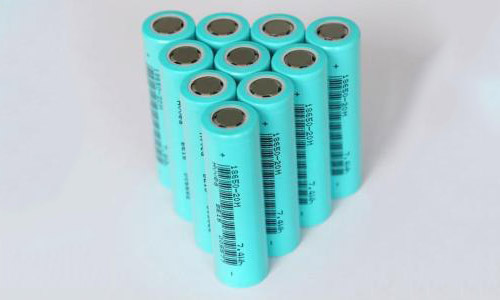Lithium Battery Discharge Voltage Common Questions
Nov 21, 2019 Pageview:1436
Lithium-ion cells have transformed the battery technology industry on a large scale with many significant and life-changing applications. The cells have supported human existence for a while now and will continue to do so a bit longer. They were developed in multiple primary areas which include:
Long-lasting charge cycles- To prevent the death of the batteries after a few months
Excellent capacity retention- helps the cell to remain functional even after a few years
Faster charging- for only about an hour and one would have themselves a fully charged battery
Low cost of maintenance
Increased battery safety
Is it okay to fully discharge a lithium battery?
Lithium batteries are a reliable battery technology as compared to their predecessors. It is, therefore, okay to discharge the cells and especially rechargeable lithium-ion batteries. However, one should note the cut-off voltage put in place for discharging these cells and never go below them lest they risk damaging the batteries ultimately. Also, avoid fully discharging these cells. AS much as you may be advised to discharge the cells periodically, it is considered overworking them. Fully discharging them can lead to dangerous effects for both the battery and its user.
Lithium battery discharge cut-off voltage
The discharge cut-off voltage is a crucial parameter concerning the lifespan of lithium battery technology and hence, should be made clear to all lithium battery users for their benefit. The general cut-off/ final voltage in any battery is the assigned lower-limit voltage at which the discharge of cells is considered complete. This limit is usually chosen to achieve the maximum useful capacity of the battery pack. The cut-off voltage of one battery technology is different from the next and highly depends on the type of cells, plus the type of application for the battery. For example, when testing the capacity of a non-rechargeable cell, the cut-off voltage is set for 1.0V per cell, unlike alkaline batteries, where a 0.9V is usually used per cell.
When focusing on the cut-off voltage of lithium batteries, lithium-ion cells are particularly the main topic of discussion. For lithium batteries, the cut-off voltage implies that it is not suitable to continue discharging the battery any longer if the voltage arrives at a specific value. Ignorance of this precaution could lead to an irreversible partial capacity of the cell or severe damages at times.
The standard rated voltage of a lithium battery is typically 3.7V while the cut-off voltage is set at 2.7V. However, at times, the manufacturers of lithium cells may raise the cut-off voltage to 3.0V for various reasons, which may include safety usage of the battery pack. Another factor may be in consideration of specific electronic devices and the environments in which they operate. In other cases, the cut-off voltage may be reduced to around 2.4V or 2.5V by manufacturers or produces, but in no such event, has it ever dropped below 2.4V.
Lithium cells with a cut off voltage of 2.7V can continue discharging, unlike those with a set voltage of 2.5V. The reason behind this being that the discharge loss between 2.7V to 2.5v might be partial, but discharge lower than the 2.5V may lead to severe and permanent damage to the cells. Lithium battery packs are often referred to as multi-cell lithium batteries and have a cut-off voltage, which is expected to be not less than 2.75V. Due to the high prices on lithium-ion batteries, both the single and multi-cell lithium batteries come pre-installed with PCM or protection IC. These features are used to alert the electronic devices whenever the cells are close to reaching their respective cut-off voltages.
At what voltage is a lithium battery dead?
A battery cell as good as the pre-set voltage. If one happens to discharge below that set standard, they will have themselves a dead battery. A lithium battery can, therefore, be termed as dead if the cell is discharged below its set voltage or cut-off voltage. There are consequently specific ranges that are deemed safe to leave your batteries discharging to avoid damaging your battery.
There are also signs you need to look out for when it comes to a dead battery. Here are a few things you should watch out for:
External marker issues
Markers may discuss battery issues in a subjective view, but the outer casing might also show signs of damage over time. One should, therefore, look out for different types of cracks in the casing, swellings, or rupturing of the signs at times.
Leaks
The current lithium cells use a liquid electrolyte in their chemical composition. When the cells are in constant use, these electrolytes tend to leak out due when subjected to long periods of temperature variations or fluctuations deemed toxic to both the battery and its users. If a battery is at the discharge point, the electrolyte undergoes specific processes and hardens, which puts the cell at a higher state of discharge, leading to death.
Terminal complications
Whenever a battery cell intends to transfer energy across different points in an electrical device, one will need to use connectors. After a long while of usage, these terminals may enter a ‘discoloring’ state, which is a sign of grime on the endpoints. This is the reason why battery users are always instructed to clean their terminals regularly to avoid such illnesses.
Final words
There are, however, a few meltdowns with this battery technology that tend to render it imperfect. The primary issue with these cells is the amount of energy it contains. If by chance, something goes wrong during charging or due to other factors, the battery may deliver all that energy I a few seconds hence causing problems such as a fire. All this may be due to the electrolyte used in the chemical composition of these cells. These materials that make up the electrolyte are highly flammable and evaporate quickly. When exposed to intense variations in temperature, they get very reactive, leading to risks of fires and explosions.
The rampant precautionary measures taken to improve lithium-ion batteries have led to the development of many other technologies that are deemed safer. The invention of solid-state batteries is an excellent upgrade of the safety of battery technology. These cells are assumed to use a solid in their electrolyte and, therefore, reducing the chances of possible fires or other dangers.
Also, there is the emergence of water-based electrolytes in cells. These electrolytes inhibit any fire tendencies that may arise due to intense environmental conditions. However, as much as these technologies seem impeccable, their application cannot be compared to those of lithium-ion batteries. With time, people will come to embrace these new inventions for the benefit of their safety in battery usage.
- Prev Article: LiPo Battery Discharger Circuit Discussion
- Next Article: Lithium Battery Waste Disposal – Recycling Solution
Leave Message
Hottest Categories
-
Hottest Industry News
-
Latest Industry News











